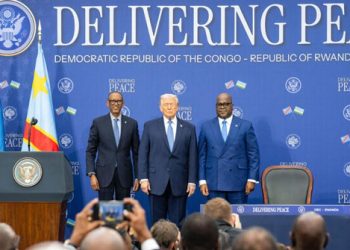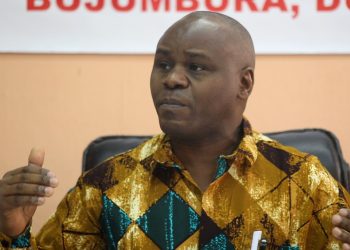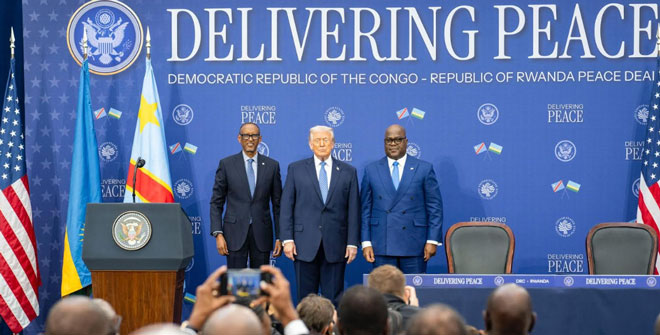Listening to music from other cultures furthers one’s pro-diversity belief
Jake Harwood turned his lifelong hobby as a musician into a scholarly question: Could the sharing of music help ease interpersonal relations between people from different backgrounds, such as Americans and Arabs?
To explore the issue, and building on his years of research on intergroup communication, Harwood began collaborating two to three years ago with his graduate students and other researchers on a number of studies, finding that music is not merely a universal language. It appears to produce a humanizing effect for members of groups experiencing social and political opposition.
“Music would not have developed in our civilizations if it did not do very important things to us,” said Harwood, a professor in the University of Arizona Department of Communication. “Music allows us to communicate common humanity to each other. It models the value of diversity in ways you don’t readily see in other parts of our lives.”
Harwood is presenting his team’s research during the International Communication Association’s 67th annual conference, to be held May 25-29 in San Diego.
In one study, Harwood worked with UA graduate researchers Farah Qadar and Chien-Yu Chen to record a mock news story featuring an Arab and an American actor playing music together. The researchers showed the video clip to U.S. participants who were not Arab. The team found that when viewing the two cultures collaborating on music, individuals in the study were prone to report more positive perceptions — less of a prejudiced view — of Arabs.
“The act of merging music is a metaphor for what we are trying to do: Merging two perspectives in music, you can see an emotional connection, and its effect is universal,” said Qadar, who graduated from the UA in 2016 with a master’s degree in communication.
The team published those findings in an article, “Harmonious Contact: Stories About Intergroup Musical Collaboration Improve Intergroup Attitudes.” The article appeared in a fall issue of the peer-reviewed Journal of Communication.
Another major finding: The benefits were notable, even when individuals did not play musical instruments themselves. Merely listening to music produced by outgroup members helped reduce negative feelings about outgroup members, Harwood said.
“It’s not just about playing Arab music. But if you see an Arab person playing music that merges the boundary between mainstream U.S. and Arab, then you start connecting the two groups,” Harwood said.
As part of his ongoing research in a different study, which he will present during the International Communication Association conference, Harwood and Stefania Paolini, a senior lecturer at the University of Newcastle’s School of Psychology, measured people’s appreciation for diversity, gauging how they felt about members of other groups. After doing so, the team asked people to listen to music from other cultures and then report how much they enjoyed the music and what they perceived of the people the music represented.
The team found that people who value diversity are more likely to enjoy listening to music from other cultures, and that act of listening furthers one’s pro-diversity beliefs.
“It has this sort of spiral effect. If you value diversity, you are going to listen to more music from other cultures,” Harwood said, noting that that research is continuing. “If all you are doing is listening to the same type of music all the time, there is homogeneity that is not doing a lot to help people to increase their value for diversity.”
For Harwood and his collaborators, these findings are affirming given the decades-old world music explosion and more recent examples of performers around the world who regularly sample and cross-reference outgroup musical traditions and elements.
Harwood pointed to Paul Simon’s “Graceland” album as an early and notable example. Released in 1986, the album drew influence from South African instrumentation and rhythms.
“It was the start of the world music phenomena,” Harwood said. “Suddenly, everyone wanted to listen to African music. Then Indonesian, then Algerian music. Then you see this modeling of new music with different musical cultures and different people collaborating with each other.”
Harwood also said artists such as Eminem and Rihanna are among those who are experimenting with music that crosses cultural boundaries. “This whole new type of music is emerging that would not exist if you did not have that kind of cross-collaboration.”
Harwood also said his team’s findings build on earlier research and emergent models of intergroup dialogue that encourage direct contact and conversation to help build cross-cultural understanding and cohesion.
“We must think about music as a human, social activity rather than a sort of beautiful, aesthetic hobby and appreciate how fundamental it is to us all,” he said. “We can then begin to see people from other groups as more human and begin to recategorize one another as members as the same group.”
ScienceDaily




























